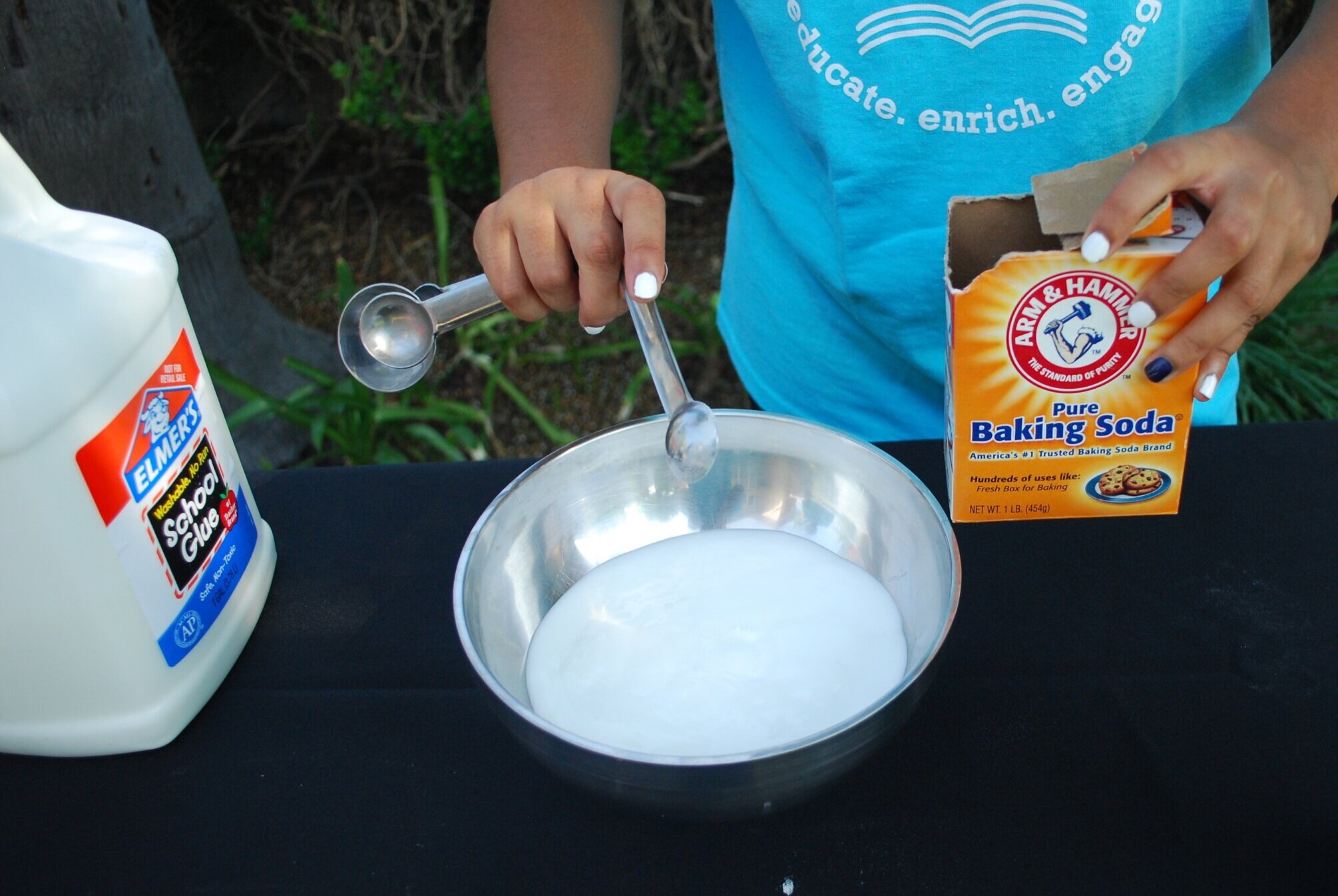Glow in the Dark Slime
Materials
White glue
Contact lens solution
Baking Soda
Non-Toxic Glow in the Dark paint
Bowl
Any creepy glow in the dark creatures you want to add (spiders, eyeballs, etc.)
Measuring spoons
A dark room
Procedure
Step 1
Add 2 cups of glue and ½ of a teaspoon of baking soda to the bowl. Mix everything well.
Step 2
Add 4-6 tablespoons of glow in the dark paint. Have fun with this part! Choose fun colors! Mix everything well.
Step 3
Add a squirt of the buffered saline solution, around 2 teaspoons. Start mixing the solution into the slime and add more contact lens solution if the mixture is too liquidy. Once your slime starts to get stretchy and forming into a glob, add only small amounts of the contact lens solution to your slime.
Step 4
After it has become stretchy, put some contact lens solution on your hands and pick up the slime from the bowl and start stretching and kneading it through your hands till it comes together. Note! If your slime is still liquidy, you can add some more contact lens solution. Don’t add too much though because your slime will then become stiff and break!
Step 5
Now that you have a stretchy and cool slime, go ahead and add your spooky accessories like eyeballs and spiders to give your slime a creepy and textured look!
Step 6
Bring your slime into a dark room and close the lights! Does the slime give off a spooky and fascinating glow?
Science Explanation
Kindergarten - 2nd Grade . . .
- 2-PS1-1
- Wow! Look at how spooky your slime is? How does it feel? Is it soft or hard? Did you add multiple colors? Notice how it feels with all your fun creatures inside!
- How does the slime become a stretchy and gooey mixture? (Answer: the buffered saline solution acts almost like glue to all of the elements in the slime, putting them all together till it forms a squishy putty!)
- Slime is all about the different polymers! Polymers are small molecules that are connected to each other by bonding. Polymers are everywhere and even in the food, we eat such as bread and butter. Bread contains carbohydrates which is a type of longer polymer and butter contains lipids!
- Did a chemical reaction happen? (Answer: Yes! A chemical reaction happened! The molecules inside the buffered saline solution and the glue bonded together which allowed all the things you added in your slime to come together, forming a new mixture, slime!)
- 1-PS4-2
- How can you see the slime in the dark? (Answer: Objects in darkness can only be seen when they are lit up by a light. Normal objects can be seen with a normal bright light source while glowing objects need a black light to see the fluorescent shine.)
3rd Grade - 5th Grade . . .
- 4-PS4-2
- Look at your slime? Notice the textures! What do you feel?
- How does the slime glow in a dark room? (Answer: Objects in darkness can only be seen when they are lit up by a light. Normal objects can be seen with a normal bright lightbulb while glowing objects need a black light to see the fluorescent shine.)
- How does a black light cause things to glow such as the slime?
- The electromagnetic spectrum is a scale that lines up all of the electromagnetic waves based on what their wavelengths are. Black lights shine UV light. UV light is near what we see as blue/purple but is slightly shorter. The shorter wavelength makes UV light have higher energy.
- 5-PS1-4
- A chemical reaction is when two or more substances mix together to create a new substance. Looking at the materials list and what you made to make your slime, do you think a chemical reaction happened?
- Yes! A chemical reaction did happen. The different polymers in the glue and saline solution mixed together to create a stretchy slime!
Written by Aminah Rangwala Inspired by: Steampoweredfamily








